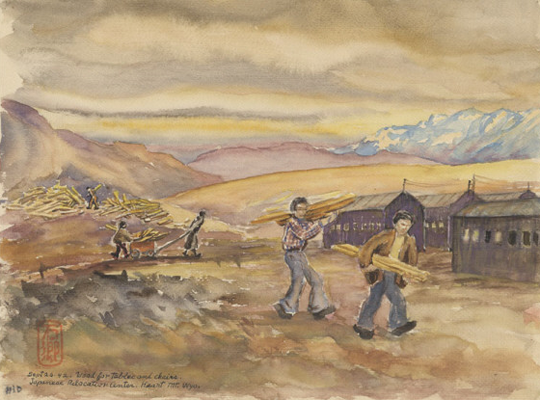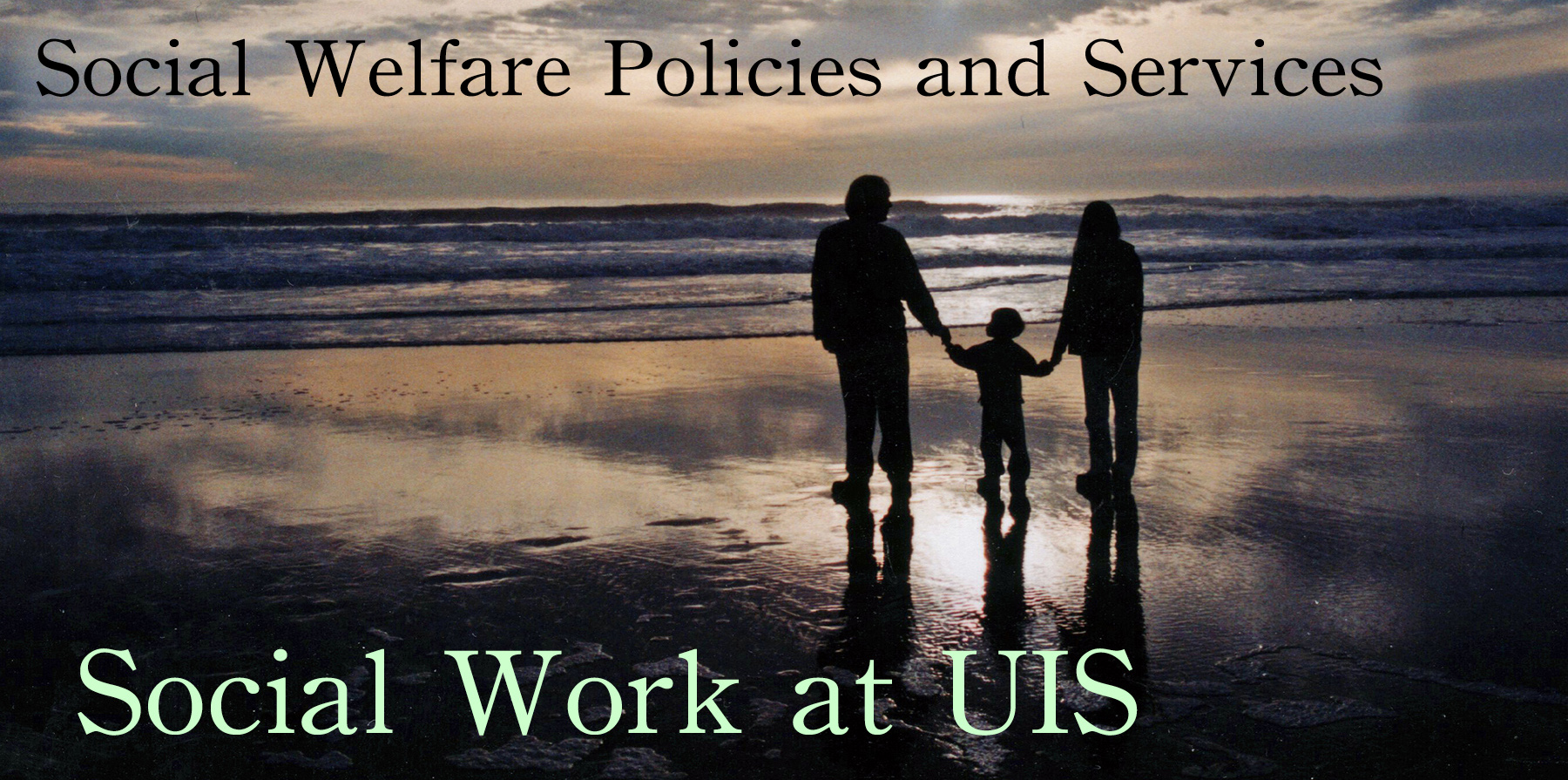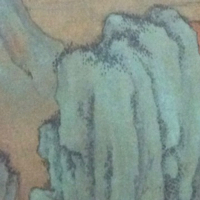There is no class meeting this week on Zoom.
This session begins without a class on October 28th at 2:00pm, so you should budget about three hours for working on the discussion board questions to be posted in Canvas.
Class session lasts from October 28 at 2:00 p.m. to November 4 at 1:59pm, but the discussion boards will not be graded until after November 12th.
This page describes what you should do in this second session.
Objectives of this session
- Learn about the struggle for Civil Rights
- Learn about racism and dehumanization
- Learn about efforts to reduce or eliminate racism.
- Learn about the consequences of racism.
- Learn about the history of racism.
Time Budget for 11 hours
3h 30m Time spent on discussion boards.
1h 15m reading about demographic change and diversity in America (profile of the unauthorized population; Facts on U.S. immigrants, 2018; Who is Hispanic?; The changing racial and ethnic composition of the U.S. Electorate; Social Work Practice with Latinos: Key Issues for Social Workers.
30m reviewing the lecture on immigration and ethnicity in the USA.
2h prepare for the mock hearing during the Zoom class we have in the 11th session.
1h write your second reaction essay and submit it.
14m to look over some surveys to understand a bit more about racism: Look at the lecture presentation on surveys and racism. Some of the original reports upon which this is based can be found at: 1) Pew Research Center's American Trends Panel Wave 43 race relations final topline results [pdf]; and 2) the General Social Survey, where you can see responses to questions like are racial differences due to inferiority of Blacks? and Would you object to opposite race at dinner?
5m to read Microaggressions study reveals racial atmosphere within UIS community by Sean Blackwell (a graduate of our program who earned his MSW at the University of Chicago).
8m to read The Physical Damage Racism Inflicts on Your Brain and Body by Sarah Zhang, July 12, 2016. Wired.
8m to read Racism has a toxic effect from Science News, May 31, 2019.
15m to read What are the effects of racism on health and mental health? from Medical News Today, July 28, 2020.
10m to read An Appeal for Human Rights (March 6, 1960). Willie Mays, James Felder, Marion D. Bennett, Don Clarke, Mary Ann Smith.
10m to read Researcher: Despite Good Intentions, Anti-Bias Training Can Actually Backfire. by Mary Kate McCoy, May 30, 2018. Wisconsin Public Radio.
10m to read Expert: You Can’t Unlearn Stereotypes But You Can Overcome Them. by Colleen Leahy, June 7, 2017. Wisconsin Public Radio.
35m to review and read the very short Civil Rights History at FindLaw and also the list of civil rights Supreme Court court cases at FindLaw. Try to learn the various laws and significant court cases.
20m to watch Romany Malco’s “The Racket of Racism” (also available on Vimeo)
What will happen in the class meeting at the start of this session?
We do not have a class meeting at the start of the session, but if we did, I would cover the following:
- Current events related to social welfare policies and services
- The situation with policing in Ferguson Police Department. How common is that?
- We would go over the statistics of how many persons are incarerated (and for what reasons, and where), and consider how drug legalization would possibly help, but certainly not solve the problem of incarerating too many people.
- We will talk about the various approaches to reducing our incarerated population from 2.2 million to 1 million.
- We will discuss private prisons and how incentive structures might be used (but clearly are not) to help lower recidivism. The injustices and incompetence depicted in the Shane Bauer article about his undercover job as a prison guard.
- We will talk about false convictions, the execution and imprisonment of the innocent, and how social workers may be involved in addressing these problems.
- We might possibly talk about human rights and the death penalty.
- Evidence for various types of prejudice and institutional racism related to how the criminal justice system treats Hispanics, Native Americans, and African-Americans.
- We would briefly discuss the problems of police killings of civilians (what fraction of total police killings of civilians are justified, which are honest mistakes we should tolerate, and which are evidence that police are brutally violating human rights and murderously and savagely exhibiting a dehumanization of non-police?
- Counter-arguments against some of the positions on institutional racism and social justice. What facts inform the critics of police and courts?
- The Smart Decarceration Grand Challenge.
- We will discuss how to give expert testimony at a hearing; how to prepare for a mock hearing presentation.
- We will talk about what happens in a committee hearing, and how expert testimony and advocacy works within the domain of policy practice.
- We would discuss the documentary on reforming the police, and how that documentary informs our thinking about what could be done to reduce police misconduct.
What must you read this week?
This week has many short readings. In the old days, these would have been assembled into a reading packet, but with the Internet, I just have assembled links to resources you should read. Just follow along with these readings.
Begin your readings by examining issues around demography, considering how the ethnic composition of the population has implications for soical work practice:
Read the Profile of the unauthorized population; This will help you understand how many undocumented people live in the United States without having legal status. These persons are often marginalized. They all live with a degree of uncertainty and anxiety related to their legal status as residents here.
Read Facts on U.S. immigrants, 2018; and as you read this, consider how immigration is changing the demographics of American society, and consider how people react to this.
Read Who is Hispanic?; And as you read this article, consider issues around the identities of “Hispanic” and “Latina/o” people in the United States. Traditionally, “Hispanic” referred to persons from Spanish-speaking societies (including Europeans from Spain, and excluding South Americans from Brazil, Surinam, etc.) “Latino” refered to persons from south of the United States, including the peoples who spoke Indigenous langauges, English, Portuguese, Dutch, French, and French Creole in the Caribbean, Central America, and South America. Consider also the issue of Americans referring to immigrants by their continents of origin. We speak of Arab-Americans more often than Lebanese-Americans or Iraqi-Americans. In my own family it is often odd to consider that my wife and sons and my half-brother are considered “Asian” (my half-brother’s mother is a native of Kerela State in India, my wife is Taiwanese-American). In our family we generally do not think of ourselves as generically “Asian” and instead, we identify as “Taiwanese-American” or, perhaps more broadly, “Chinese” in the sense of “Sinic culture of the Chinese Diaspora” (and absolutely not “Chinese” as being like persons from Mainland China). Although I’m obviously an European-American, I grew up with strong and significant cultural influences from my Indian step-mother and my involvement in the Indian immigrant community, and having lived over four years of my life in Taiwan and having been married for nearly three decades to a person from Taiwan, I also feel some degree of Taiwan’s culture and identity is part of who I am. Obviously, with immigrants from every country on earth (excepting perhaps the Vatican?), Americans cannot be expected to fill their brains with hundreds of different cultures and ideas about the distinctions between, say, Javanese-Indonesian-Americans and Sino-Malaysian-Americans. So, we ask immigrants from Asia to adopt an “Asian” identity (or we impose it on them); perhaps making a distinction between “South Asians” and “East Asians”. But, considering how many Hispanic / Latino Americans we have, should we perhaps be more open to distinguishing between the Mexican-Americans and Domincan-Americans and Haitian-Americans and Brazilian-Americans and Columbian-Americans and Cuban-Americans rather than using one term to refer to all these persons? No doubt we must use broad terms like “Hispanic” or “Asian” or “Black” to refer to people in some circumstances (we can’t expect to stop people who say “Black” and ask “are they American African-American or are they Jamaican-American or Nigerian-American or what?” But, does the mental short-hand of using those broad terms get in the way of clear thinking sometimes?
The changing racial and ethnic composition of the U.S. Electorate; is another short piece you should read. Bear in mind that there is good research showing that many Americans are apprehensive about changing demographics. In small groups, if one group is dominant, the members of that dominant group tends to feel unthreatened by small numbers of representatives from an “out-group” but as the proportion of the group’s composition begins to increase for the “out-group” members and correspondingly decrease for the “in-group” that had been more overwhelmingly dominant, the anxiety and competitive feelings in members of the dominant group will increase. This phenemona has been observed in men and women, but the feeling is stronger in men (presumably because men are more competitive in general and therefore pay closer attention to ratios of “in-group” and “out-group” than women do). Each member of the dominant group will have their own “setting of discomfort” at which point they will become apprehensive about the growth of numbers in the minority group. Some will be uncomfortable when 2-of-15 are minority, others will be fine up to 5-of-15 in the minorty. In communities, if those who are most apprehensive about increasing representation of minorities leave a community, this will accelerate the growth of minority representation, as each increase in some “out-group” representation will scare away the slightly more secure/tolerant members of the dominant group, and resistance will grow to any further in-migration of representatives of the minority. Keep in mind this psychological dynamic as you consider how non-Hispanic European-Americans have gone from about 76% of the population in 1980 to about 60% in 2020. In those same 40 years Hispanic/Latino populations increased from 6.5% to nearly 19%, and the Asian population grew from 1.5% to a little over 6%.
Social Work Practice with Latinos: Key Issues for Social Workers. The obligatory reading to help you see how the demographic information fits in with considerations of how we practice our profession.
Look over my lecture on immigration and ethnicity in the USA. Hopefully we will go over this in class, but it is useful to consult this lecture for a few facts and ideas it presents.
Look at the lecture presentation on surveys and racism. Some of the original reports upon which this is based can be found at: 1) Pew Research Center's American Trends Panel Wave 43 race relations final topline results [pdf]; and 2) the General Social Survey, where you can see responses to questions like are racial differences due to inferiority of Blacks? and Would you object to opposite race at dinner? It is interesting to see how many people will still admit to having racist ideas. Consider how we think about what the term “racism” or “racist” and what those terms represent to us. If you explore some of the other questions reported in those original sources, you may note some other things of interest (support for affirmative action is very low). If a person opposes affirmative action, gives priority to liberty over fairness (people ought to be able to discriminate in deciding to whom they will sell their home), and thinks police who shoot or kill African-Americans may in almost all cases (but not all, there are exceptions, they will admit) simply be doing their job or might be innocently mistaken rathe rthan racist, we might think that those three beliefs or positions indicate some degree of racism; but what if they would genuinely welcome a dinner guest or a next-door neighbor of another race, would have no objections to their children attending school or dating or even marrying someone of another race, and routinely have persons of other race over for dinner or to watch a game together? It gets a bit more complicated, doesn’t it?
Read Microaggressions study reveals racial atmosphere within UIS community by Sean Blackwell (a graduate of our program who earned his MSW at the University of Chicago and now practices social work in Washington State in the Seattle area). Consider for yourself the concept of microaggressions. Some might seem harmless, but how harmless are they really? Let’s look at the next readings:
Read The Physical Damage Racism Inflicts on Your Brain and Body by Sarah Zhang, July 12, 2016. Wired.
It’s a short piece that summarizing research. Maybe those microaggressions aren’t so harmless, or is the “racism” described in this article the more obvious stuff? Read on.
Read Racism has a toxic effect from Science News, May 31, 2019. Oh, more studies. The evidence is piling up. And what is this about subtle and non-obvious actions that may or may not show racism being more difficult to handle compared to overt and obvious prejudicial actions and behaviors? Wow.
Go deep into this topic of racism and its influence by reading What are the effects of racism on health and mental health? from Medical News Today, July 28, 2020. Now we are out of the popular press and reading something for health care professionals. So, it is not just an issue of social justice, it is also an issue of life-and-death (or at least health and expected life-span).
Read An Appeal for Human Rights (March 6, 1960). Willie Mays, James Felder, Marion D. Bennett, Don Clarke, Mary Ann Smith. You are reading this one short document so that you will be familiar with the ideals of the Civil Right movement of the 1950s-1960s. But what can we do about all this? Read on...
Read Researcher: Despite Good Intentions, Anti-Bias Training Can Actually Backfire. by Mary Kate McCoy, May 30, 2018. Wisconsin Public Radio. So, maybe the training to reduce racism and racial prejudices isn’t the simple answer we hoped it would be? Read on...
Read Expert: You Can’t Unlearn Stereotypes But You Can Overcome Them. by Colleen Leahy, June 7, 2017. Wisconsin Public Radio. Oh, we can do interventions that do help people overcome prejudices and reduce their racist thoughts (or the power of those thoughts to unconsciously shape their attitudes and behaviors).
And, for your final reading assignment, you just need to review and read the very short Civil Rights History at FindLaw and also the list of civil rights Supreme Court court cases at FindLaw. Try to learn the various laws and significant court cases. In particular, you need to be able to match the name of the law or court case with the summaries provided at FindLaw for:
- The Thirteenth Amendment
- The Fourteenth Amendment
- The Fifteenth Amendment
- The 1955 Montgomery Bus Boycott
- Title II and Title III of the Civil Rights Act of 1964
- The Greensboro, NC lunch counter sit-in.
- The Voting Rights Act of 1965
- The 1965 Immigration and Naturalization Act (not mentioned at FindLaw, but covered in the lecture I provided on immigration).
- The Fair Housing Act (Title VIII of the Civil Rights Act of 1968)
- The Civil Rights of Institutionalized Persons Act of 1980
- The Americans with Disabilities Act of 1990
- Executive Order 9066
- Civil Liberties Act of 1988
- Shelley v. Kraemer (1948)
- Brown v. Board of Education (1954)
- Bailey v. Patterson (1961)
- Loving v. Virginia (1967)
- Jones v. Mayer Co. (1968)
- Tinker v Des Moines Independent Community School District (1969) Not in the FindLaw page you were assigned to examine, so look it up here)
- Roe v. Wade (1973)
- Note that FindLaw has incorrectly explained University of California Regents v. Bakke (1978) in the summary you look at. That finding was against the use of racial background as a sole factor in admissions in public university, but affirmed the right of public universities to take racial background into account in making their admissions decisions (you must not use quotas or set aside places for persons based on their ethnicity, but you may try to achieve a diverse student body by giving some weight to a racial background in making admissions decisions. )
- Warren v. District of Columbia (1981) Also not listed in the FindLaw summary. This decision tells us police have no duty to protect us (and, by extension, social workers have no duty to protect persons such as children or elderly persons who are abused). It was affirmed in the similar case of Town of Castle Rock v. Gonzales (2005) in which the Supreme Court found that if a police department or individual police officer fails to enforce a restraining order, and the person under the restraining order defies the order and harms you, the government is not responsible. (This may possibly be a violation of a human rights treaty, and if so, the Supreme Court was wrong in their decision).
- Batson v. Kentucky (1986)
- Meritor Savings Bank v. Vinson (1986)
- DeShaney v. Winnebago County (1989) This is another legal you should know, although it is not one on the FindLaw list. The Supreme Court says that if you are not in state custody, the state has no duty to protect your life.
- Lawrence v. Texas (2003)
- Obergefell v. Hodges (2015)
What must you watch this week?
Watch Romany Malco’s “The Racket of Racism” (also available on Vimeo)
What must you write and do this week?
Prepare for your first attempt at the mock hearing. You probably need to write out some notes to organize your short presentation.
Write your second reaction essay and submit it.
Your final writing projects are the third policy paper and the end-of-semester self evaluation. You can start work on your editorial (third policy paper) next week.
What are the discussion questions this week?
Discussion Question 1:
Discussion Question 10-1: Check in. As usual, you can post about your life and ideas and experiences. How are you feeling, and what are you doing? To make these a little different each week, I'm going to suggest you share some observations about your favorite bird species, or your favorite animals, or any animal species you feel close to. Rather than talking about pet animals like dogs and cats and rabbits and so forth, and whether we prefer budgies or parrots, I have in mind some discussion of wild birds or wild animals: things you might see in a nature documentary, or at the zoo, or outdoors.
Discussion Question 2:
Discussion Question 10-2: America passed six major civil rights laws between 1963 and 1990, and many, many more laws (mostly amendments to existing laws, but we still call major amendments “laws”) . These major laws are:
- Civil Rights Act of 1964
- Voting Rights Act of 1965
- Age Discrimination in Employment Act of 1967
- Civil Rights Act of 1968 (Fair Housing Act)
- Title IX, Education Amendments of 1972
- Americans with Disabilities Act of 1990
In your own life, which of these six laws do you think has been most significant in improving your quality of life? All have been beneficial to our society, although some people claim that perhaps there have been unfavorable unintended consequences from some of these (but even most reasonable people who make those arguments concede that on balance these laws have all been very good for our society), our general consensus is that these are laws we as a nation ought to feel proud about. You might have some words to say about which of these laws you feel best about, or what possible unintended consequences for good or ill might have come from them, but my main interest here is which of these laws do you believe has brought the most benefit to you as a human being?
Discussion Question 3:
Discussion Question 10-3: According to your understanding of racial prejudice and racism and implicit bias and all those sorts of things, what do you think would be the best sort of program to address this problem, and help dismantle or reduce racial prejudices in our society? Do not worry too much about “best” in answering this question; I mainly want you to share your opinions and insights about the sort of policy or service you think would be reasonably effective and efficient, and why you think that policy or service would be helpful. Be sure you have read the two assigned readings for this session from Wisconsin Public Radio before you answer this question, as you may want to use insights from those articles in your answer.
Discussion Question 4:
Discussion Question 10-4: Discussion Question 10-4: Here are this session’s ten questions that are likely to appear on quizzes or the final exam, and you ought to try to find answers to these. I hope each student can find at least one or two answers until all the questions have been answered.
1) What is the current unemployment rate, both the official rate and the real rate that includes discouraged workers and those involuntarily working part-time? (any answer fairly close to the most recent rate at the time of the test will be counted as correct)
2) What percent of the population in the USA was born abroad?
3) What is described by this collection of problems: 1) bad schools with low expectations; 2) low investment in some youth; 3) strict discipline and zero tolerance policies in schools; 4) Use of expulsion and frequent suspensions; 5) Inadequacies in the Juvenile Justice System; 6) Adult Prisons.
4) Approximately in what percent of cases investigated by child protective agencies is a child removed from the custody of their parents (temporary and permanent, combined)? That is, when child welfare agencies determine that they will investigate a referral or call to the hotline, and they assign a child protection worker to go out and investigate a case, in what percentage of those cases is a child removed from the family, perhaps to be later returned to the family or perhaps to be placed into foster care and eventually adopted or emancipated?
5) According to the best research, what is a good estimate for about how many children, in any given year, will experience maltreatment?
6) About how many Americans are food insecure?
7) About how many Americans are housing insecure?
8) How many Americans use the tax deduction for mortgage interest?
9) In any given month, about how many persons are receiving assistance from the Supplemental Nutrition Assistance Program?
10) What is the poverty rate for persons aged 65 or older?
Discussion Question 5:
Discussion Question 10-5: As you look at the responses to questions that measure racism or dislike of particular races, you may notice some odd findings. For example, the minority groups rate their own group as being “warmer” than other groups (they feel better about people in their own group). But with European-Americans, this preference for other European-Americans is much less (if there even is any preference). One possibility is that most minority groups can fear that they are disliked by other groups, and assume that members of their own group will automatically be less likely to be prejudiced against them, so they prefer their own group. Members of minority groups may also feel a closer affinity or solidarity with other members of their minority group because they have a special shared experience that gives them something in common, whereas European-Americans do not perceive their experience as being in anyway special or unique to them (because being European-American is not special or uncommon; it’s just “normal” to them). It could also be the case that European-Americans are more afraid of giving socially undesirable answers, so they are intentionally making sure they give similar temperature ratings to minority groups as they give to themselves. What do you think explains the “lack of preference for their in-group” among European-Americans relative to the other American minority groups, and even more importantly, how might this distinction influence how European-Americans perceive the behaviors and preferences of persons who have minority race/ethnicity status?
Discussion Question 6:
Discussion Question 10-6: Another strange thing about the surveys that try to measure racism or in-group preferences and discomfort around out-groups is the finding that the proportions of European-Americans who dislike any particular minority group are not much larger than the proportions of those minority group members who dislike their own group. What is going on with the people who feel cold and distant toward persons of their own ethnic group? As an European-American who typically favors fairly radical policies, I know that I sometimes am frustrated with my fellow-European-Americans for their tendency to be far more conservative than I am. But, I can think of things I dislike about the stereotypical sub-cultures of all the ethnic groups in America in addition to politics, and none of these things make me feel any colder toward persons of those groups, as far as I can tell. Are people who feel distant from their own group dismayed by the stereotypes or subcultural traits typically assumed to belong to their racial/ethnic group, and trying to distance themselves from that? Have they embraced the self-loathing of racist attitudes toward their group and internalized the racism? Or are these people who just misanthropic and alienated from humanity, and they marked their feelings as hostile toward all the groups? Or what? What is your guess for this phenomena of about 1-out-of-20 or 1-out-of-30 people feeling coldness and dislike toward their own group?
Discussion Question 7:
Discussion Question 10-7: This is a continuation of the session 9 discussion question 9-7. What are you planning to say in the practice mock hearing when we meet at our 11th class session? You might use this question to work out with others in your group how to divide up your roles and who will be giving more of a facts-and-expertise presentation and who will be giving more of an anecdote-and-moral-narratives.
Discussion Question 8:
Discussion Question 10-8: The readings on the influences of racism on the physical and mental health of the targets of racism (African-Americans) makes for sobering reading. Some African-American intellectuals and some conservatives have claimed that in fact, African-Americans today experience very little racism, and the trends are good, and in day-to-day experience, racism is not an important figure (the people that point this out tend to by highly educated and financially very secure, and I have seen no surveys to tell me how widespread this perception is among the general population). These persons warn that there is a sort of religion of anti-racism, and although racism is an evil, and persists, and ought to be diminished or extinguished, they take exception to many of the anti-racists. For example, I invite you to watch any of these videos to see the sort of critiques: 1) John McWhorter and Sam Harris in episode #217 in Making Sense (the Sam Harris podcast); 2) Glen Loury & John McWhorter on The Glenn Show (episode from September 24, 2020); 3) Thomas Sowell speaks in 2018 at the Hoover Institution about Discrimination and Disparities; and 4) Shelby Steele at the Hoover Institution speaks in 2018 about How America’s Past Sins Have Polarized Our Country. Once you have heard enough to understand the arguments that racism is really not so important, and the anti-racism work is possibly harmful more than it is helpful, try to consider those arguments in light of what you read for this session about the way racism harms the bodies and minds of Americans.
Discussion Question 9:
Discussion Question 10-9: Open topic on this week’s subject. If you have any observations, suggestions, or questions related to race and racism and policies that address prejudice and racism (civil rights laws and Supreme Court cases), this is a section to ask those questions.
Activities
Here is what I expect you to do this week
- Read and post in the discussion board for about three hours this week.
- Prepare your positions for the mock hearing.
My notes:
Here is a short set of points I wanted to make when considering the topics of prejudice and discrimination and crime:
1) There is controversy about how violent humans are. Were we always violent, or did violence arise when we domesticated land and invented settled agriculture, and thus become interested in property and territory. Some say that between 300,000 years ago and 12,000 years ago the human population was so sparsely distributed that humans would have experienced almost no struggle for scarce resources, and inter-group violence would have been rare. Others suggest that we were savage and violent, and probably had some sort of ethnocentrism or tribal in-group versus out-group prejudices all through our evolution from primitive hominids to modern civilization. Evidence of warfare from any sites more recent than 13,000 years tell us nothing about human cultures before domestication of animals and crops, and what evidence of warfare and violence do we have from sites older than 13,000 years? Not much, but we have hardly any evidence of what humans were doing between 300,000 and 13,000 years ago anyway.
In fact, there is abundant evidence of warfare from 10,000 years ago and more recently, but only spotty evidence for inter-group violence from periods earlier than this. So, there is a significant debate between people who argue humans have a long history of violence and brutality stretching back for 10,000 generations and those who say we were probably usually mild and friendly to each other until about 400 generations ago when we invented settled agriculture and domesticated livestock. These persons who stress the “humans were always violent” narrative claim that we are getting less violent, and the counter-argument against this is the claim that humans have a long history of peaceful cooperation over 9000 generations, interrupted by a period of violent behavior over the past 400 generations, and now we are slowly returning toward our original peaceful social patterns. A significant portion of the arguments about the historical and evolutionary patterns of human violence incorporate theories of ethnocentrism and ideas about the human tendency to create in-groups and define these against out-groups and then show favoritism and trust toward members of the in-group and suspicion and hostility toward members of the out-group.
Mathematical models using game theory in simulations run by Ross A. Hammond and Robert Axelrod suggest that ethnocentrism could emerge because having a bias toward more benevolent exchanges with recognizable members of an “affinity group” tends to be a successful strategy. Andrew Bausch found that cooperation emerges among groups that are close together and closely related, suggesting that Hammond & Axelrod found something more like “loyalty to family” or “neighborhood loyalty” rather than “ethnocentrism” yet both studies establish a case for the practice of giving preferential treatment to members of an in-group (family, local community, or tribe/ethnicity) being an emergent property of the universe that can be expressed mathematically.
2) The "old-fashioned" blatant racism Americans understand when they think of racism was invented in the 17th century, and according to the general social survey, it is declining to a point where it is possible to imagine it will die out completely within a few more generations (about a century). The dark-skinned sub-Saharan Africans encountered by Europeans in the 15th and 16th centuries were in many cases wealthier and more technologically sophisticated than Europeans. The Classical Greeks described darker Africans from Ethiopia as being among the most virtuous and blessed of all nations. So, persons with ancestral heritage from sub-Saharan Africa were not thought inferior or uncivilized in some quarters of the ancient world. Some dynasties in Ancient Egypt were ruled by families from the Upper Nile (persons with very dark black skin). And, although mostly persons from Africa were enslaved by Europeans and Arabs and Persians and Turks, there was sometimes slaving in the other direction, with Europeans taken to Africa as enslaved persons by North Africans. Up through the 18th century there was a slave trade involving North Africans raiding European coastlines and capturing Europeans to return to Africa where they were sold as slaves (this slave trade was trivial in size compared the commercial trans-Atlantic slave trade supplying labor to plantations in the colonized Americas). Among early persons enslaved and brought to America in the 17th and early 18th century were university-trained engineers and scientists who had been captured in West African wars and then sold to European slave-traders (although of course most persons who were enslaved were peasants, farmers, and soldiers from conquered kingdoms—African aristocrats and well-educated persons would rarely have been found in the coastal slave markets). And yet, North American rice cultivation was begun when plantation owners in South Carolina purchased hydrologists who had been responsible for canals and irrigation back in West Africa. These technical experts knew all about rice cultivation, and showed the ignorant English, whose expertise was more in raising sheep and growing wheat, how to grow rice. Historians tend to agree (almost have a consensus) that the blatant dehumanizing racism that characterized American societies between the 1700s and the 1900s was largely attributable to a psychological need of Europeans to justify their treatment of African persons they had enslaved.
The only way Europeans could maintain a good self-opinion of themselves as virtuous while exploiting and murdering millions of Africans was to invent ideas about those Africans being sub-human. While the mental distortions linger to this day in American society, and contribute to social injustices and continuing dehumanization of immigrants and African-Americans, we also can witness in our society a rapid shift in attitudes over the past fifty years, and extrapolate from the gains we have made in reducing prejudice that the long-term future looks promising, provided we continue to do whatever has been working in reducing prejudices, and do not backslide into a more prejudiced set of mentalities. The history of European treatment of Jewish populations shows that long-term improvement in race relations can be dramatically and dangerous reversed. It is also the European treatment of Jews that offers us the first example of “racism” in the modern sense, as Spanish and English policy-makers in the 13th through 16th century supposed that Jewish (and Muslim) populations had character traits that could be inherited that made them inferior to Christian Europeans. See Adam Hochman’s answer to the question: is ‘race’ modern?
3) Ideas of race in America are confused, and they are going to get even more confusing. Rates of cross-racial marriage have been doubling every ten years since 1970 until stabilizing between 15% and 20% around now, and at the current rate we can expect almost every newborn American to be multi-racial within five generations. Currently 10% of all newborns are multi-racial; two generations from now, in 2060, demographers estimate 30% of children born will be multiracial; five generations from now, in 2130, about 80% to 90% of children born will be multiracial. Even now, more than half of Americans who identify as only African-American or Black have among their grandparents, great-grandparents, or great-great grandparents some ancestors who have Asian, Native American, or European backgrounds. Genetic markers of having Native American ancestors are on average far more plentiful in people identifying with the "ethnicity" of Hispanic than those identifying with the "race" of American Indian. At the moment, any adult with significant African heritage and darker skin is considered African-American, but this seems unlikely to continue as inter-racial marriage “lightens” the complexions of African-Americans while also dramatically increasing their proportion of the population.
4) Anti-racist idealism has a long history in America, although it is ignored in most mainstream history books and most revisionist or radical histories as well. Consider the poem "Verses Upon a New Century" composed by Samuel Sewall (1674-1729) and first read in early January of 1701: "So Asia, and Africa, / Europa, with America; / All four, in Consort join'd shall Sing / New Songs of Praise to Christ our King." Sewall, an early abolitionist, envisioned America as a land where peoples of Europe, Asia, and Africa would join with the indigenous Americans "in consort" to create a virtuous multi-racial society. Sewall is credited as one of the founders of the American movement for civil rights for powerless groups. He was the only judge at the Salem Witch Trials who later repented, and indeed, devoted the rest of his life to making amends for his role in the execution of 20 innocent persons during the hysteria in 1692. He is credited with writing the first anti-slavery tract, one of the first essays portraying Native Americans favorably, and one of the first essays arguing for the equality of women to men. American history is full of men and women of all races who rejected racist ideologies and exploitive social systems. For a few examples of historically significant interracial friendships, check out the National Center for Race Amity resources.
Interesting Stuff To Explore
In this section of the class session guide I enjoy sharing interesting web resources of additional and supplemental materials I think you might enjoy exploring on your own time. You are not expected or assigned to look at this material, but I offer it to support your curiosity.
resources about immigration
The Response - America’s Story. Migration (27 minute radio program)
Diana Vellos offers this history of immigration law regarding people of color.
The Chinese Exclusion Act of 1882 (text of law)
More background and analysis of the Chinese Exclusion Act and the Chinese Exclusion Repeal Act of 1943.
The Immigration Act of 1924 (The Johnson-Reed Act)
The Immigration and Nationality Act of 1952 (The McCarran-Walter Act).
Most Asian-Americans can trace their American ancestry no further back than immigrants in their family who arrived after the Immigration and Naturalization Act of 1965. And so, when it comes to affirmative action or policies to help historically oppressed groups, the Asian-Americans are typically excluded. Yet, those Asian-Americans with deeper roots in American history have in fact experienced significant oppression and discrimination. From Maxine Hong-Kingston's Chinamen to displays at various museums and websites, you can read about what Chinese immigrants and Asian-Americans had to suffer in America before the civil rights era and the era of new Asian immigration following the 1960s.
A detailed article from 1995 at the Center for Immigration Studies about the changes in immigration following the Immigration and Naturalization Act of 1965. The Center for Immigration Studies is not neutral. It's moderately anti-immigration. It therefore distorts information in this report. For example, it shows that immigrants have higher rates of not completing high school. It doesn't show that immigrants also have higher rates of college education and graduate education. In education, immigrants are a bi-modal population. Refugees and working-class Mexican immigrants tend to be poorly educated, and some family reunification immigrants from Asia are also more likely to be poorly educated. Yet, European and Asian immigrants, and even immigrants from South American nations (south of Central America) tend to be better educated than native-born Americans. Recent African immigrants are a good example. Many are college educated or have post-graduate degrees, and come as immigrants because they are highly skilled. Many others are refugees, and some of these refugees arrive without literacy skills or even basic educations. Showing only the over representation of poorly educated immigrants without also mentioning the over representation of well educated immigrants is a trick, a distortion of facts, and it throws everything else in the 1995 "study" by the Center for Immigration Studies into doubt. And yet, there are many basic facts in the article, so I post a link to it so you can see it for yourself. By the way, the Southern Poverty Law Center designates the Center for Immigration Studies as a hate group, but anti-immigrant people often use CIS as a source, so you can see what sort of things they put out and be aware.
Frederick Douglass, Refugee by David Blight. February 7, 2017. Atlantic Monthly
Immigration Reform and Control Act of 1986 (IRCA)
America's Immigration Challenge by David Frum. December 11, 2015. Atlantic Monthly
Federation for American Immigration Reform (FAIR) (an organization for reducing immigration and cracking down on undocumented alien residents in the USA). FAIR is a hate group, according to the Southern Poverty Law Center. The notorious racist John Tanton is the main person behind FAIR.
Carrying Capacity Network (lots of points about reducing immigration)
The Americas Program is a great source of thoughtful articles about immigration and trans-border issues, and you can also find articles about immigration from the Mexican press translated into English here.
The White House immigration rule.
Less than half of US children under 15 are white, census shows. By William H. Frey. June 24, 2019. Brookings.
A fine source of good information about immigration and migration is the Migration Policy Institute.
Open Society Foundation covers migration and asylum policy.
The U.S.-Mexico Foundation.
Pew Foundation facts about unauthorized immigrants.
The United States Population.
women’s issues
civil rights and race
violence and peace
Other things to do (optional)

The image above is a watercolor by Estelle Ishigo. It shows Japanese men looking for wood for tables and chairs. This was something that took place on September 26, 1942 in the Heart Mountain Japanese Relocation Center in Wyoming.
If you want to read more about Inclusion:
Abbott, Suzanne & McConkey, Roy. (2006). The barriers to social inclusion as perceived by people with intellectual disabilities. Journal of Intellectual Disabilities, 10(3), 275–287.
Bishop, Benjamin P. (2013). Nature for mental health and social inclusion. Disability Studies Quarterly, 33(1), Retrieved from http://dsq-sds.org/article/view/3430/3205
Crawford, T., & Simonoff, E. (2003). Parental views about services for children attending schools for the emotionally and behaviourally disturbed (EBD): A qualitative analysis. Child: Care, Health & Development, 29(6), 481–491. http://doi.org/10.1046/j.1365-2214.2003.00368.x
van Asselt-Goverts, A. E., Embregts, P. J. C. M., & Hendriks, A. H. C. (2015). Social networks of people with mild intellectual disabilities: Characteristics, satisfaction, wishes and quality of life. Journal of Intellectual Disability Research, 59(5), 450–461. http://doi.org/10.1111/jir.12143
Horner-Johnson, W., Keys, C. B., Henry, D., Yamaki, K., Watanabe, K., Oi, F., … Shimada, H. (2015). Staff attitudes towards people with intellectual disabilities in Japan and the United States. Journal of Intellectual Disability Research, 59(10), 942–947. http://doi.org/10.1111/jir.12179
Stancliffe, R. J., Bigby, C., Balandin, S., Wilson, N. J., & Craig, D. (2015). Transition to retirement and participation in mainstream community groups using active mentoring: a feasibility and outcomes evaluation with a matched comparison group. Journal of Intellectual Disability Research, 59(8), 703–718. http://doi.org/10.1111/jir.12174
If you want to read more about crime, here are some recommended links:
- American Correctional Association and their Corrections Connection.
- The CNN crime story page, with a mix of stories related to crime issues.
- Sourcebook of Criminal Justice Statistics.
- Death Penalty Information Center.
- Downsate Illinois Innocence Project at UIS.
- Illinois Department of Corrections Victim Services.
- The FBI.
- The Federal Bureau of Prisons.
- National Archive of Criminal Justice Data.
- Office of Juvenile Justice and Delinquency Prevention.
- Youth Violence: A Report of the Surgeon General. (2001).
- Community Oriented Policing Services.
- Crime and the natural environment? Maybe there is a link.
- Information for a social work response to victims of crime.
- A Report from 1997 on what works to prevent crime.
- A report on promising strategies in decreasing youth gun violence (from the late 1990s).
- The Centers for Disease Control and Prevention page about violence prevention.
- The United Nations study of violence against children (from 2006).
- The World Health Organization's study of Violence and Health (2002).



















































